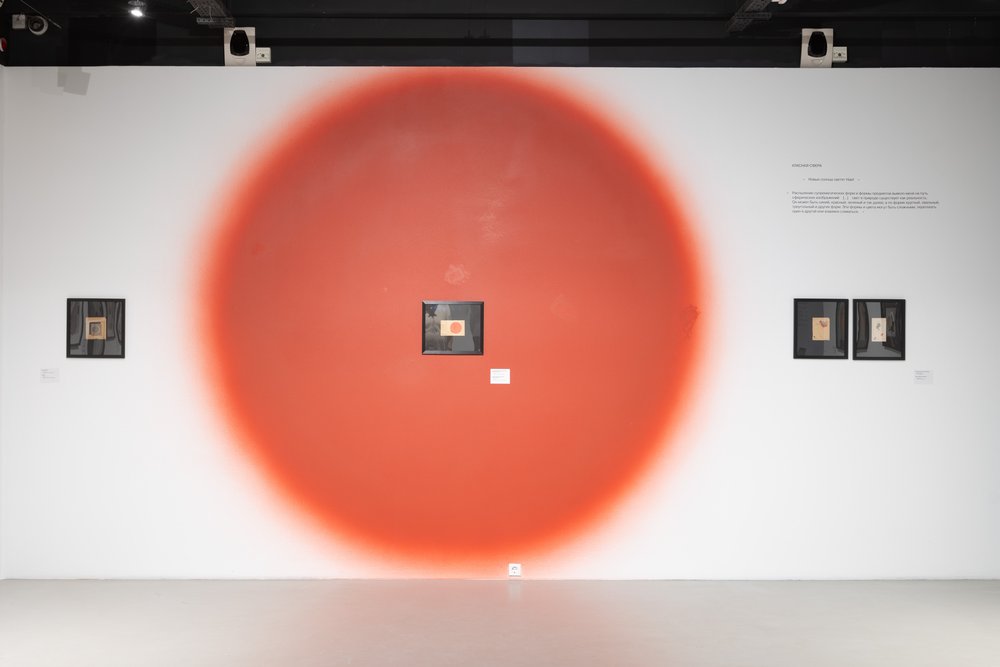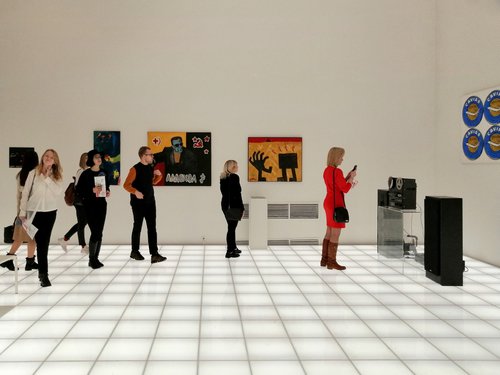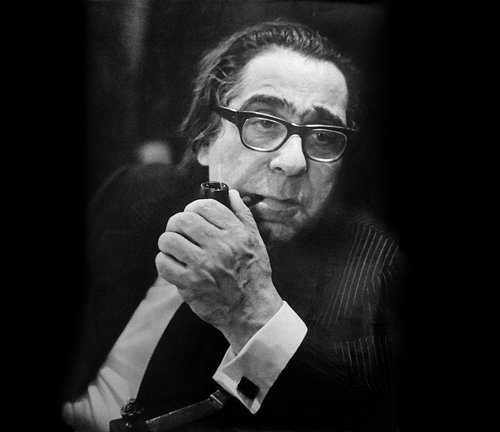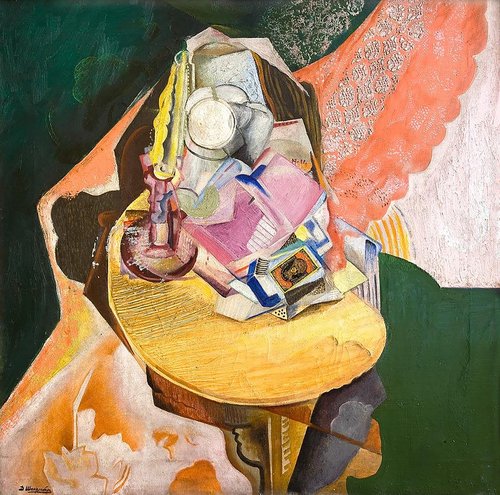Ivan Kliun: Beyond the Shadow of Suprematism

Ivan Kliun. Colour Forms. The Artist’s Lab. Exhibition view. Moscow, 2025. Courtesy of Moscow Museum of Modern Art
Kliun is an artist often shown in association with the heros of the Russian Avant-garde and a new exhibition at MMOMA in Moscow laudably tries to demonstrate his versatile artistic evolution from geometric abstraction to realism. Although the exhibition challenges stereotypical perceptions of this underappreciated Russian avant-garde artist, does it go far enough?
Disputes about the authenticity of art are renowned for their ferocity and the Russian avant-garde occupies a special place in these battles. Its attribution is always maximally tangled and even in the case of the legacy of Ivan Kliun (1873-1943) we have yet to hear a consensus of the top recognised experts. But let this not prevent us from discussing the present exhibition.
Ivan Kliun (1873–1943) has long occupied an honoured place in the history of art. Albeit, strictly in the second row. Closely associated with such major figures as Kazimir Malevich (1879–1935), Aleksei Kruchenykh (1886–1968) and Solomon Nikritin (1898–1965), Kliun’s works are shown in any serious survey exhibition of Russian avant-garde, his name is always cited when it comes to lists of the great Russian pioneers of the first half of the 20th century, and he is always included in museum collections. Inspite of this, it is as if he has always stayed in the shadows. Never an imitator or an epigone, Kliun nevertheless only ever remained a competent manager within his own artistic universe. He did not pioneer new forms or become an ideologue of influential artistic movements, but the relatively modest professional tasks he set himself, he solved with a brilliance that would have been the envy of certain first-tier geniuses. Now that the latter have been studied from all sides and exhausively exhibited, it is time for artists who are not so well known to the general public.
The exhibition ‘Ivan Kliun. Colour Forms. The Artist’s Lab’ curated by Oksana Voronina, and on display in one space in the educational centre of the Moscow Museum of Modern Art (MMOMA), fills one of these lacunas. As already mentioned, Kliun’s works have been shown in many different contexts but mostly they are textbook works which show how well he fits into the Suprematist milieu (which somewhat distorts his creative path). At MMOMA, by contrast, Kliun is presented mainly as an artist of works on paper and, a little bit, as a poet. The Kliun Foundation which has been recently established has lent about a hundred works for this show, both originals and digital copies.
Kliun is known above all for his calibrated composition. And in this sense, he is an excellent draughtsman. In the exhibition at MMOMA, organised more or less chronologically, one can see how the quality of materials available to Kliun increasingly deteriorated due to a universal scarcity brought in by the 1917 Bolshevik revolution yet how, in parallel, he was improving his technique. At some point he clearly does not care what he uses to create his works and how short-lived they are. With a certain manicism, Kliun honed his skills, regardless of the circumstances, be they external criticism or everyday inconveniences. His consciousness was inside art, he thought and lived through artistic tasks. He even dedicated poetic lines to them: “I dissolved myself in art, / Discarded in it the idea of things, / And life, coloured by colour, / Fractured in the crystal brain. <...> Incomprehensible, objectless, / Colour alone burns in me; / In my brain the colours sparkle / And are reflected from outside. / Motion is a glare, reflexes are feelings, / One dynamic in the passions, / Matter – colour, texture, form, / All life is a kaleidoscope”. This manifesto poem ‘Credo’ (1923), whose typewritten text with the author's edits in pencil is presented in the exhibition, shows how he dived into artistic problematics and never came out of it.
The only, but rather frustrating, disadvantage of the exhibition is that the creators of the project did not find the strength to abandon the stereotypical image of Kliun as an adherent of Suprematism (and for some reason they hung an extremely inappropriate self-portrait of Malevich from the MMOMA collection). This cliche is literally inscribed in the architecture and design of the exhibition: for example, in the centre of the space there are three bollards with display cases referring to geometric abstraction – square, round and triangular in cross-section; huge red and blue circles are drawn on two poles of the exhibition; one of the walls is lined with ‘teeth’. At the same time, the very material of the exhibition cries out to the contrary. The Suprematist period occupies a significant but still small part of the exhibition (as it was in Kliun's life), while the rest – his early school experiences, his dispute and separation from Malevich, his transition to a peculiar kind of realism, his admiration for the old masters – sets a completely different lens for reading the artist. And it is precisely in this this kind of versatility, the contradictions, this bubbling up of mutually exclusive ideas that Kliun is truly interesting.
On one wall the viewer sees an obsessive construction of an ideal composition consisting, say, of lines and circles, while on the other wall the artist, as if using acid, corrodes a similar constellation of figures, developing his theory of ‘spherism’. In one part of the exhibition there hangs a composition of some tetrahedrons, and in the other part Kliun superimposes coloured rectangles on more or less authentic figures of villagers, anticipating the evolution of Moscow conceptualism. These drawings (‘Peasant Woman with a Scythe and a Red Rectangle (Suprematist Realism)’ and ‘Peasant Man with a Rake and a Blue Rectangle (Suprematist Realism)’, both from the first half of the 1930s) deserve to be rhymed with works by leading artists of the second half of the 20th century.
For me personally, the history of my relationship with Kliun’s legacy is also tied to such a screaming heterogeneity of the artist. In my school years, I saw similar works in books about the Russian avant-garde and exhibited at the State Tretyakov Gallery – solid cubism and suprematism. But one day I discovered a book dedicated to the half-forgotten poetess Hebeb Habias (Nina Obolenskaya). Her only printed collection ‘Stichettes’ caused a scandal in the 1920s because of its erotic content. But much later, philologists studying her legacy discovered in the Kruchenykh archive one of the versions of the edition designed by Kliun (which was eventually rejected, apparently by anxious publishers). It was this failed cover that was realised in an edition of Habias’s poems in the late 1990s.
The composition itself was a mockery of Suprematism – characteristically angular forms, but what are the images: a Cybele-shaped goddess in the background, and a surging phallus in the foreground. The signature ‘I.Kliun’ caught my eye. Such a riot of passion and allusions to antiquity could hardly be connected in my then consciousness with the practically sterile geometrical worlds through which the artist was usually represented and still is. This is the kind of unexpected shake-up that one really needs to see in an exhibition about Kliun. And everything for this in the exhibition of the current project at MMOMA is there, but there was not enough courage.
Ivan Kliun. Colour Forms. The Artist’s Lab
Moscow, Russia
9 July – 16 September 2025

















